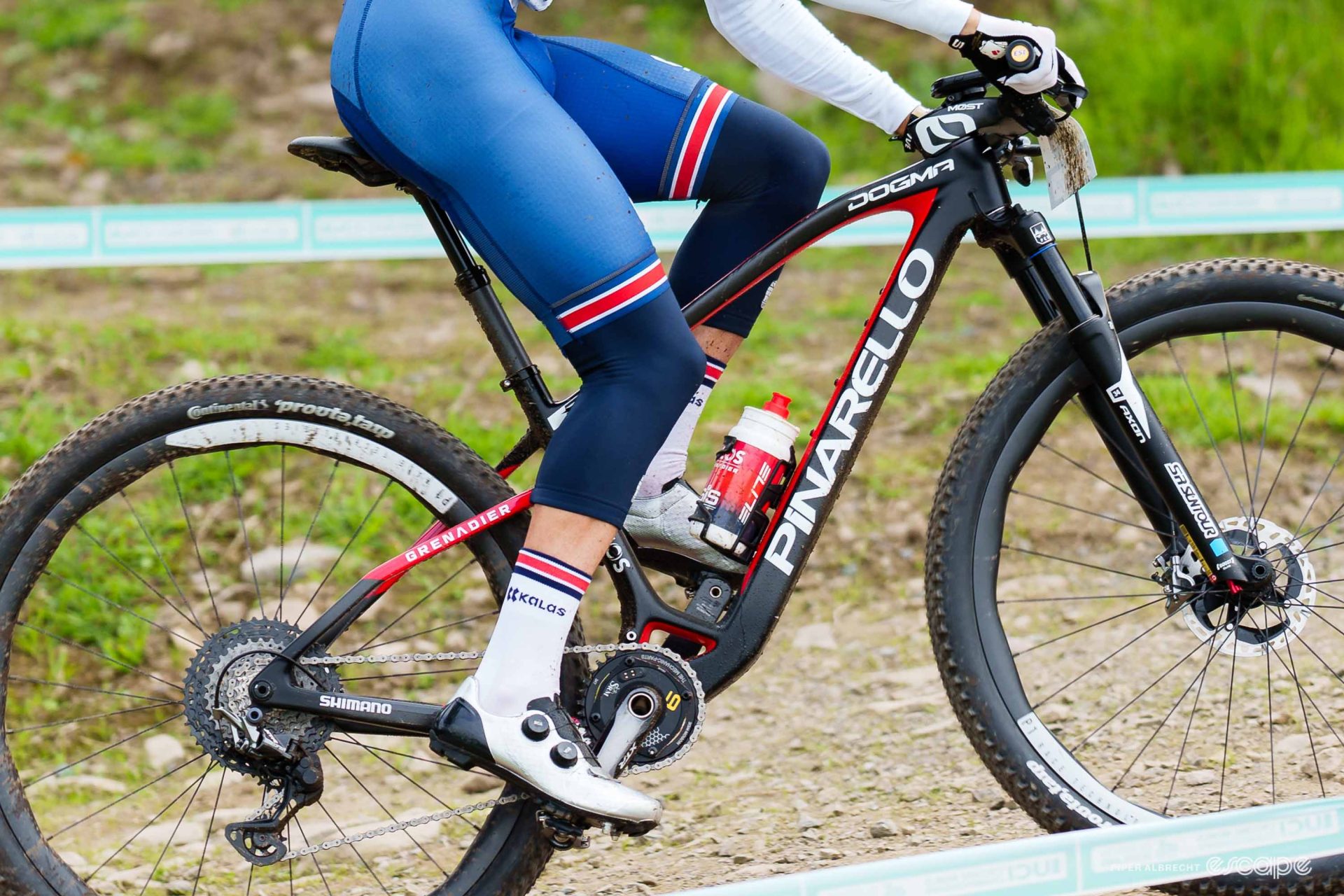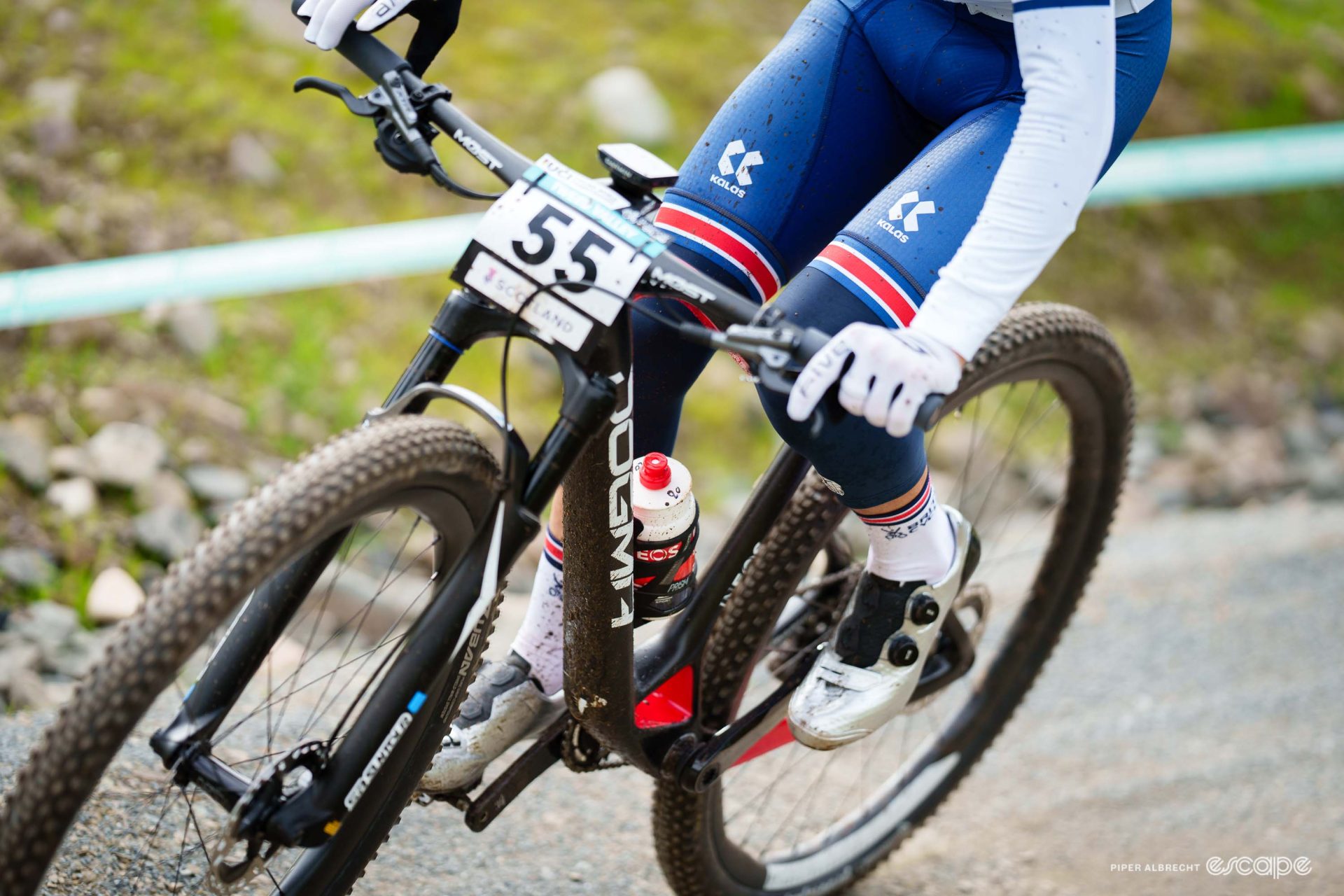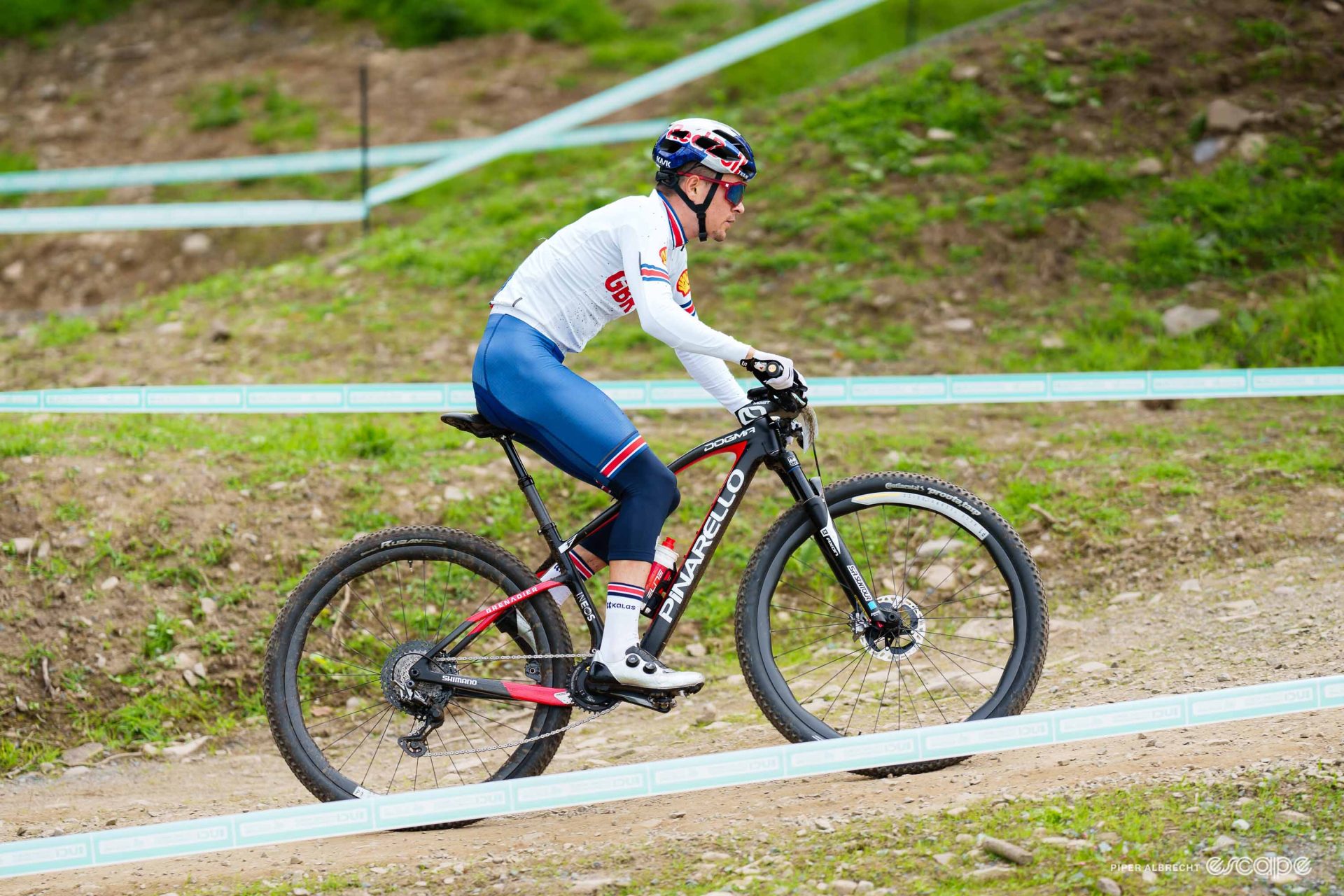One of the quirks of this year’s mountain bike World Championships in Glasgow, Scotland is that – unlike at World Cup events – riders can use different bikes in the XCC (short track) and XCO (cross country) events. The result? Hardtails are back. And one, in particular, has caught our eye: a new Pinarello Dogma XC hardtail, as ridden by Tom Pidcock and Pauline Ferrand-Prevot.
Just as was the case with the Pinarello Dogma XC full-suspension frame we showed you back in November, this isn’t Pinarello’s first go at a carbon fiber hardtail. It’s been more than a decade since the first iteration, in fact, and Pinarello apparently still isn’t willing to let some things go. Asymmetry has long been a key feature in Pinarello designs, and it’s very much alive and well here.
That asymmetry is most conspicuous out back in how the seatstays meet the seat tube. The non-driveside one connects up high, roughly in line with the top tube, but the driveside one has a pronounced kink in the middle, eventually joining the seat tube about 50 mm further down. What’s the point, you ask? I’ll let Pinarello’s PR folks make the pitch themselves:
“The rear triangle utilizes a patented asymmetric design with the left-hand side being reinforced, allowing the bike to counterbalance the higher forces being applied on the opposite side of the drivetrain. This results in more balanced energy transfer, improved speed and traction. Asymmetry has also been maximized in other areas of the frame, with the chain and top stays pushing this concept to the next level in order to withstand the powerful accelerations which are delivered in elite cross-country races.”

Is there any merit to any of those claims? To be clear, I haven’t ridden this bike myself, but I have ridden plenty of mostly symmetrical designs, and they’ve all managed to still go straight when I apply the rear brake, so take that as you will.
Down below, Pinarello has also adapted the unusual shaping from the Dogma XC full-suspension frame, with an open mini-triangle that supposedly increases stiffness in that area. Up front is another throwback feature: a built-in steerer stop. Pinarello also included this in 2012, but back then, it was an external device comprising little more than some rubber pads on the down tube. It’s a fully internal design this time around, completely hidden inside the frame.
Pinarello didn’t explicitly call this out, but one upside of incorporating a steerer stop touted by other brands is that it allows for a straighter down tube, which the Dogma XC hardtail clearly has. That more direct path theoretically reduces weight, increases front triangle stiffness, and boosts strength, although whether that’s enough to offset the extra weight of the steerer stop hardware is unclear. Either way, all of that is integrated into a special upper headset assembly, which also accommodates fully hidden hydraulic hose routing.
Pidcock is continuing to use Suntour’s new Axon TACT electronic suspension fork, and there’s clearly a strong partnership with Pinarello on the project as there’s dedicated routing for the wiring. The Suntour system also includes a rechargeable battery to power the system, which is presumably mounted inside somewhere since it otherwise isn’t visible.

Aside from what appears to be an ultra-short head tube (to provide an extremely aggressive stack dimension), Pinarello’s new Dogma XC hardtail is otherwise pretty conventional. There’s a conventional threaded bottom bracket shell down below, while a totally normal aluminum external clamp secures the internally routed dropper seatpost instead of the goofy four-bolt faceplate-like thing Pinarello once employed. Out back is a SRAM UDH-compatible rear dropout, and it looks like there are multiple threaded holes on the down tube for either tandem water bottles or a single bottle and a tool kit. Maximum official tire size is 29×2.3″.
As for Pidcock’s particular bike, the build kit is fairly conventional, too.
He’s using a Shimano XTR mechanical groupset (with the smaller 10-45T cassette and shorter-cage rear derailleur, presumably just for the short track event), an SRM power meter spider with a 34T chainring CNC-machined by obscure Dutch brand The Mechanic Parts, and the P1 Race carbon fiber wheels (made by the same folks behind Princeton CarbonWorks) are wrapped with a prototype, higher-performance version of Continental’s existing Ruban tires.

Elite supplies bottles and cages, as usual, and sitting atop the stem is what appears to be a K-Edge computer mount the company is making specifically for Pinarello. And one last standout feature? Pidcock is wearing what appears to be Specialized S-Works Recon shoes in a custom silver color. Baller.
So what’s this new Pinarello weigh? How much does it cost? When might Pinarello release them to the public? Pinarello didn’t provide answers to any of those questions, but it’s fun to see all this attention being paid to the cross-country category in general.
No information on this new Pinarello can be found at www.pinarello.com.
Did we do a good job with this story?

